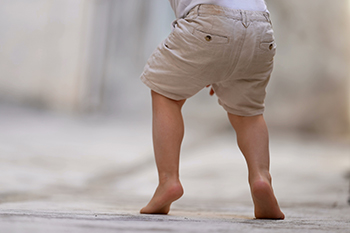
Understanding toe walking in toddlers is important for parents to discern normal development from potential issues. It's common for children under two years old to exhibit toe walking as they learn to walk. Toe walking is defined as the absence of heel strike during initial contact. It typically resolves as the child grows older, with most children demonstrating ankle dorsiflexion by age of five. However, toe walking can also be associated with specific conditions like cerebral palsy, muscular dystrophy, or autism spectrum disorders. For that reason, it's important to distinguish idiopathic toe walking, or ITW, where no pathology exists, from toe walking caused by underlying conditions. Recent studies suggest that more than half of young toe walkers will not face significant developmental or neuropsychiatric issues. While parents should monitor their child's development closely, toe walking alone isn't always indicative of a serious problem. If your child continues to toe walk past the age of five, it is suggested that you consult a podiatrist who can conduct a thorough exam and suggest the next course of action.
If you have any concerns about your feet, contact Donald Manger, DPM from Associated Podiatric Physicians, PA. Our doctor can provide the care you need to keep you pain-free and on your feet.
Biomechanics in Podiatry
Podiatric biomechanics is a particular sector of specialty podiatry with licensed practitioners who are trained to diagnose and treat conditions affecting the foot, ankle and lower leg. Biomechanics deals with the forces that act against the body, causing an interference with the biological structures. It focuses on the movement of the ankle, the foot and the forces that interact with them.
A History of Biomechanics
- Biomechanics dates back to the BC era in Egypt where evidence of professional foot care has been recorded.
- In 1974, biomechanics gained a higher profile from the studies of Merton Root, who claimed that by changing or controlling the forces between the ankle and the foot, corrections or conditions could be implemented to gain strength and coordination in the area.
Modern technological improvements are based on past theories and therapeutic processes that provide a better understanding of podiatric concepts for biomechanics. Computers can provide accurate information about the forces and patterns of the feet and lower legs.
Understanding biomechanics of the feet can help improve and eliminate pain, stopping further stress to the foot.
If you have any questions please feel free to contact our office located in Hamilton Township, NJ . We offer the newest diagnostic and treatment technologies for all your foot and ankle needs.
